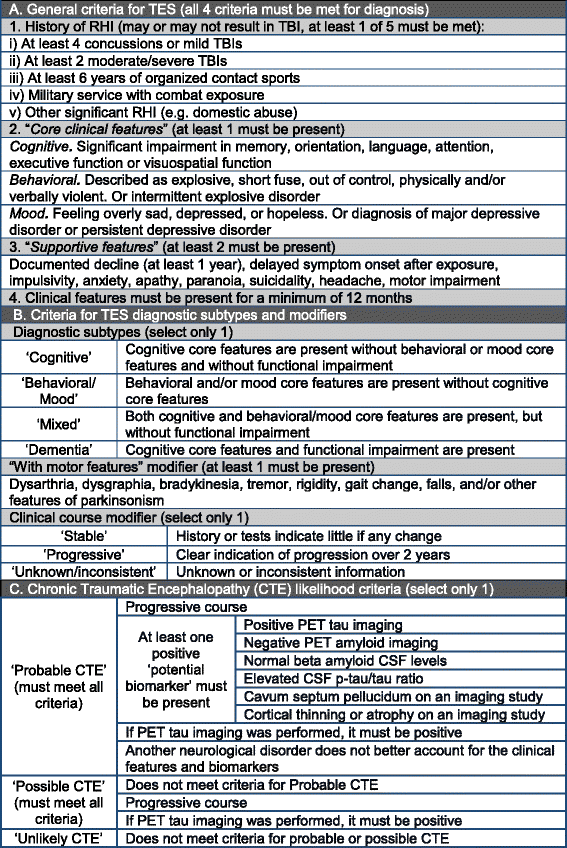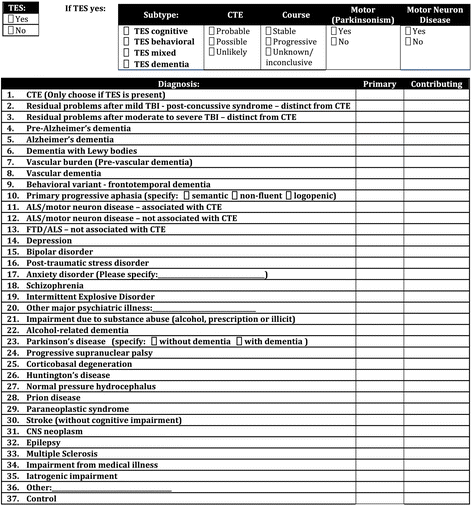Assessing clinicopathological correlation in chronic traumatic encephalopathy: rationale and methods for the UNITE study
- PMID: 26455775
- PMCID: PMC4601147
- DOI: 10.1186/s13195-015-0148-8
Assessing clinicopathological correlation in chronic traumatic encephalopathy: rationale and methods for the UNITE study
Abstract
Introduction: Chronic traumatic encephalopathy (CTE) is a progressive neurodegeneration associated with repetitive head impacts. Understanding Neurologic Injury and Traumatic Encephalopathy (UNITE) is a U01 project recently funded by the National Institute of Neurological Disorders and Stroke and the National Institute of Biomedical Imaging and Bioengineering. The goal of the UNITE project is to examine the neuropathology and clinical presentation of brain donors designated as "at risk" for the development of CTE based on prior athletic or military exposure. Here, we present the rationale and methodology for UNITE.
Methods: Over the course of 4 years, we will analyze the brains and spinal cords of 300 deceased subjects who had a history of repetitive head impacts sustained during participation in contact sports at the professional or collegiate level or during military service. Clinical data are collected through medical record review and retrospective structured and unstructured family interviews conducted by a behavioral neurologist or neuropsychologist. Blinded to the clinical data, a neuropathologist conducts a comprehensive assessment for neurodegenerative disease, including CTE, using published criteria. At a clinicopathological conference, a panel of physicians and neuropsychologists, blinded to the neuropathological data, reaches a clinical consensus diagnosis using published criteria, including proposed clinical research criteria for CTE.
Results: We will investigate the validity of these clinical criteria and sources of error by using recently validated neuropathological criteria as a gold standard for CTE diagnosis. We also will use statistical modeling to identify diagnostic features that best predict CTE pathology.
Conclusions: The UNITE study is a novel and methodologically rigorous means of assessing clinicopathological correlation in CTE. Our findings will be critical for developing future iterations of CTE clinical diagnostic criteria.
Figures




References
-
- Montenigro PH, Baugh CM, Daneshvar DH, Mez J, Budson AE, Au R, et al. Clinical subtypes of chronic traumatic encephalopathy: literature review and proposed research diagnostic criteria for traumatic encephalopathy syndrome. Alzheimers Res Ther. 2014;6:68. doi: 10.1186/s13195-014-0068-z. - DOI - PMC - PubMed
Publication types
MeSH terms
Grants and funding
LinkOut - more resources
Full Text Sources
Other Literature Sources
Medical

